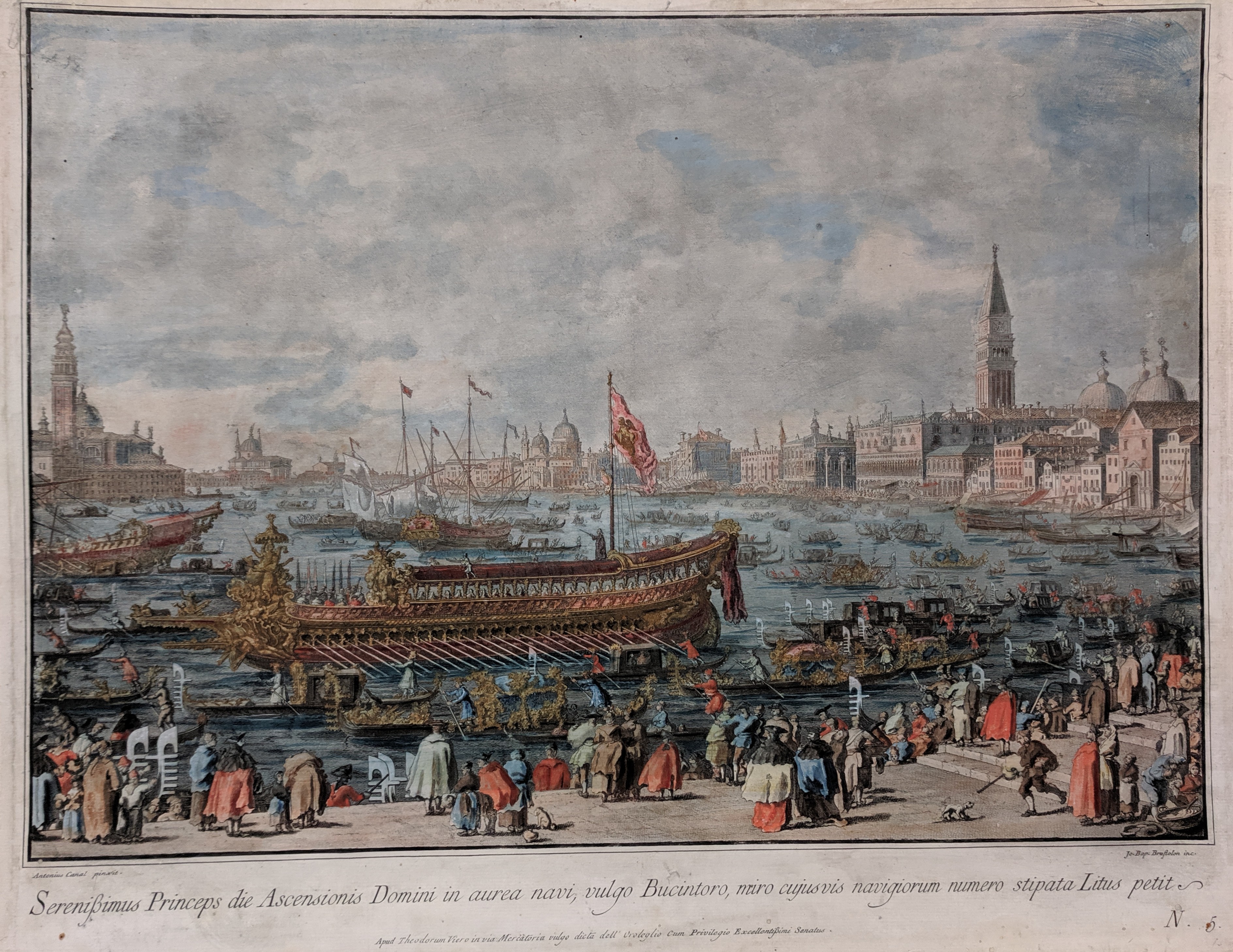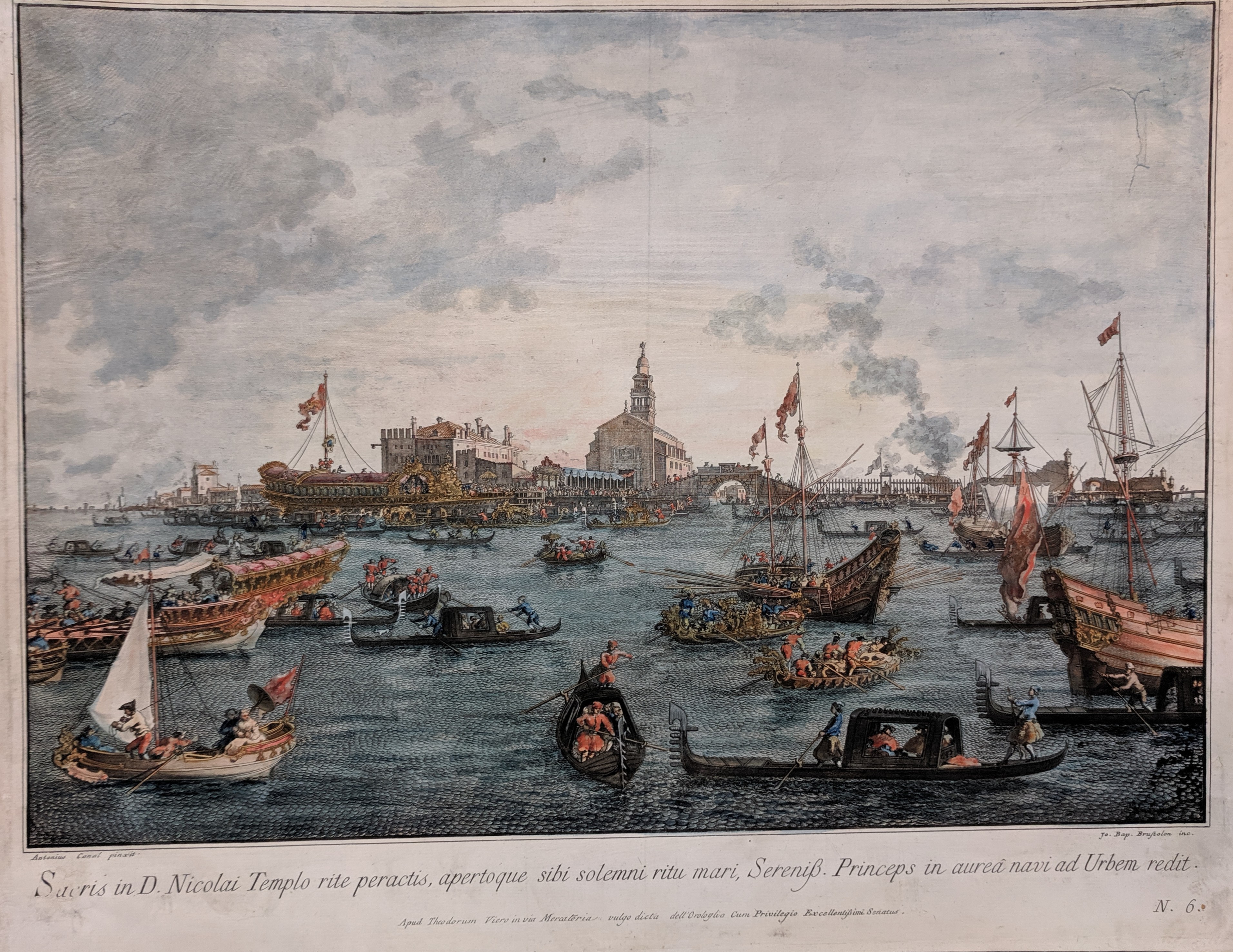
This weekend marks the annual Festa della Sensa in Venice. Although the festival didn’t start until 1965 it commemorates and recreates the ancient traditional ceremony of Sposalizio del Mar, the event in which Venice is symbolically married to the sea.
The origins of the ceremony date to the period when Venice was a sovereign state (from 697 AD to 1797 AD). It commemorates two important events in the state’s history: the May 9, 1000 departure of Doge Pietro II Orseolo with a fleet on the successful mission to subdue Narentine pirates threatening Venetian power, trade and travel on the Adriatic and Doge Sebastiano Ziani’s successful negotiation of the Treaty of Venice in 1177. The treaty ended a long standing conflict between the Holy Roman Empire headed by Frederick Barbarossa and the Papacy.
Following Orseolo’s victory, each year on Ascension Day Venice celebrated the Doge’s conquest of Dalmatia with a solemn procession of boats led by the doge’s maestà nave to the San Pietro di Castello where the Bishop blessed the doge. The procession then proceeded to the lido at San Nicolò, Venice’s entrée to the Adriatic Sea, where the prayer “for us and all who sail thereon, may the sea be calm and quiet” was offered. The doge and other officials were then sprinkled with holy water and the remainder was thrown into the sea while priests chanted “sprinkle me with hyssop and I shall be clean.”
After Ziani’s 1177 successful negotiation of the treaty Pope Alexander III pulled a ring from his finger, gave it to Doge Ziani and told him that each year on Ascension Day the doge should cast a similar ring into waters of the lagoon and “wed the sea” as confirmation of Venice’s maritime dominion over the Adriatic.

From that point on, the annual Ascension Day ritual included both the blessing of the doge and Venice’s symbolic marriage to the sea by the dropping of a consecrated ring into the sea while reciting the words “we wed thee, sea, as a sign of true and everlasting domination.”
Beginning in 1311 the doge’s maestà nave, which was probably just a small galley in the Venetian fleet, was replaced with a large state barge called a Bucentaur. Over the centuries just three more Bucentaur were built—a replacement for the 1311 vessel in 1526, another in 1606, and the last and reputedly the most magnificent of them all in 1727 (the vessel illustrated in the prints that accompany this post).
Venice’s “everlasting domination” lasted until 1798 when a series of political and military events led to the fall of the Republic of Venice. To symbolize his victory, Napoleon Bonaparte ordered the destruction of the Bucentaur. French soldiers broke the decorative parts of the vessel into pieces, transported them to San Giorgio Maggiore and burned them to recover the gold. The fire supposedly burned for three days and it took 400 mules to carry the gold away.